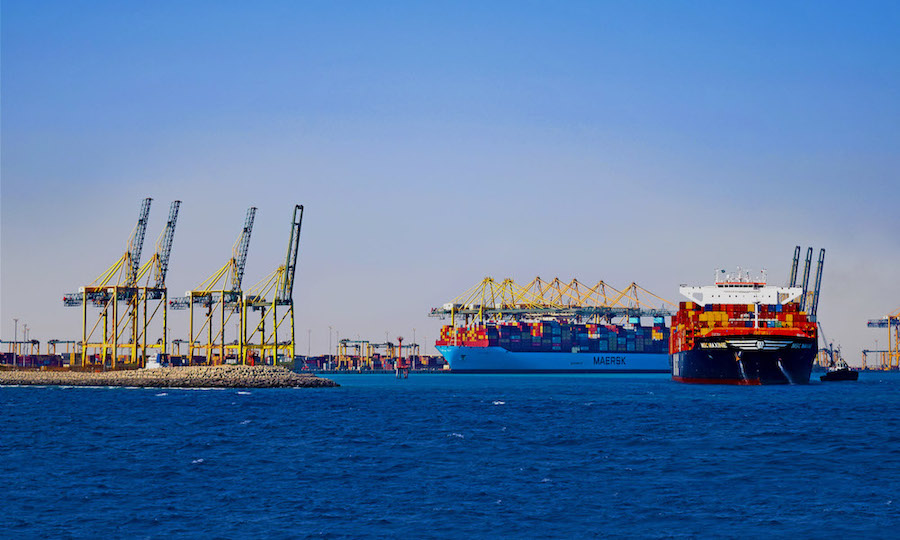Created as a benchmarking index, the CPPI serves the purpose of offering a comparative assessment of the performance of global ports throughout the year 2022.

In the recently published Container Port Performance Index (CPPI) by the World Bank and S&P Global Market Intelligence, the global rankings for container port efficiency have been overwhelmingly dominated by Middle East ports.
Read more:
The United Arab Emirates (UAE) and Bahrain have secured the top positions in the World Bank’s Logistics Performance Index, indicating their excellent performance in logistics and transportation. Furthermore, Qatar’s Hamad Port has also emerged as one of the world’s leading container ports, reflecting its prominence and efficiency in handling containerized cargo.
Top 10 ports
The CPPI, designed as a benchmarking index, aims to offer a comparative assessment of global port performance throughout the year 2022. This assessment is based on the measurement of vessel turnaround time for cargo exchange, providing valuable insights into the efficiency and effectiveness of ports worldwide.
In the current year, China’s Yangshan Port has emerged as the top-ranked container port in the world, recognized for its exceptional efficiency in handling containerized cargo.
In the rankings, Oman’s Port of Salalah has claimed the second position, demonstrating its high level of efficiency and performance. AD Ports Group’s flagship deep-water port, Khalifa Port, has secured the third spot, while Morocco’s Tanger-Mediterranean port closely trails behind in fourth place. These ports have showcased their capabilities and effectiveness in managing container traffic and handling operations.
The Port of Cartagena in Colombia has achieved an impressive fifth-place ranking, surpassing the performance of Tanjung Pelepas in Malaysia, which secured the sixth position, and China’s Port of Ningbo, which ranked seventh. This highlights the Port of Cartagena’s efficiency and effectiveness in container handling and solidifies its position among the top ports globally.
Hamad Port, Qatar’s main hub for international trade, has secured the eighth position in the rankings, surpassing the Port of Guangzhou, which ranks ninth. Egypt’s Port Said completes the top 10 list, holding the tenth position. This reinforces Hamad Port’s significance as a vital gateway for global trade and highlights its commendable performance in handling containerized goods.
Commitment to excellence
Saif Al Mazrouei, the CEO of AD Ports Group’s Ports Cluster, credited the enhanced ranking of Khalifa Port to the committed endeavors of its operations teams and the port’s state-of-the-art infrastructure. These combined factors have contributed to the port’s improved performance and recognition in the global rankings.
Our enhanced CPPI efficiency ranking for Khalifa Port is a direct outcome of the continuous endeavors made by our teams engaged in daily operations. Their unwavering focus on operational excellence and safety, combined with the advanced infrastructure at Khalifa Port, has led to this improved ranking,” he stated, emphasizing the company’s unwavering dedication to providing the utmost level of service to partners and customers.
Al Mazrouei added that our constant endeavor is to stay at the forefront of technology deployment and innovation. This enables us to provide our customers with solutions that enhance their overall experience with us and contribute to the enhanced performance of their businesses.
The goal of CPPI is to identify areas where improvements can be made for the benefit of all stakeholders, including shipping lines, national governments, and consumers.
Furthermore, the CPPI also acts as a crucial point of reference for major stakeholders in the global economy. This includes port authorities, operators, supranational organizations, development agencies, and other public and private entities involved in trade, logistics, and supply chain services.
